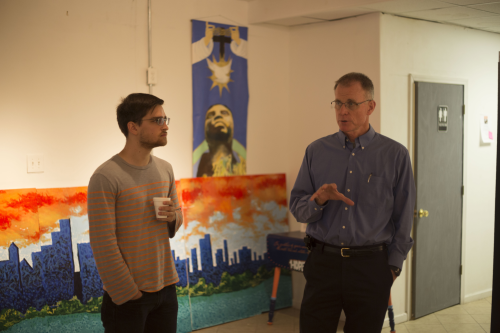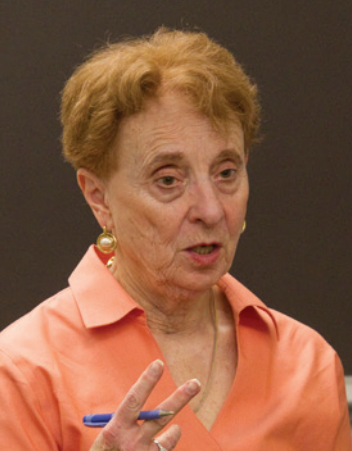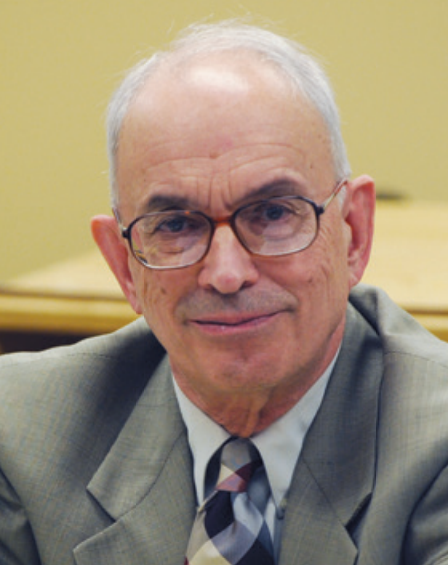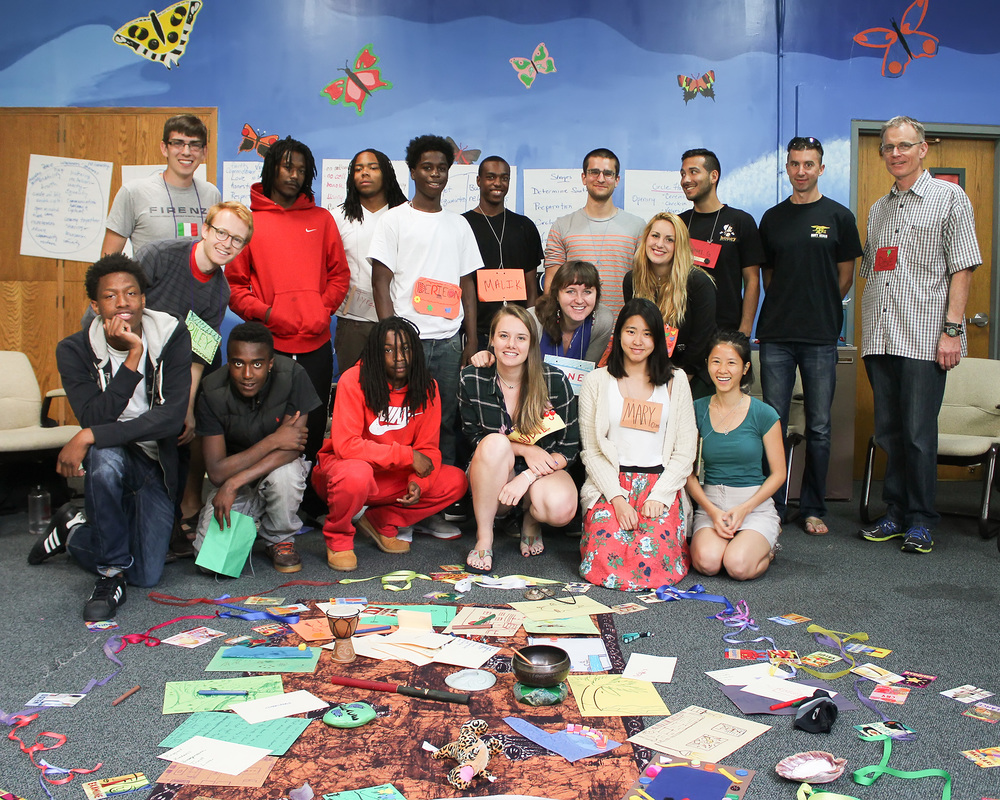Every Tuesday, fourteen University of Chicago students sit down with fifth, seventh, and eighth grade students at Chavez Elementary School in Back of the Yards to discuss topics ranging from Langston Hughes to friendship to getting in trouble in class. Participants cannot talk over one another; instead, they pass a talking piece from person to person so that each feels comfortable speaking.
The UofC students are members of the newly created Chicago Peace Corps (CPC), founded in the summer of 2015 through the University’s Sargent Shriver Fellowship Program which provides fellows with leadership training in public service. They are keeping Circle, a practice intended to create dialogue and build community. Beyond support and discussion, the Circles include conflict resolution and healing practices.
Circle is just one component of a multifaceted approach to justice known as restorative justice, or reconciliation between offenders, victims, and their community. At its core, restorative justice aims to transform society’s understanding of punishment.

“We think of crime as infractions against the state,” said CPC director Ivan Parfenoff. “The victim doesn’t matter, whoever instigated the conflict doesn’t matter, it’s just about the punishment. But there are other ways to do it.”
Restorative justice mandates substitutes for prison as the primary means of punishment, mainly in the form of sentencing Circles between perpetrators and victims of the crime. In schools, it involves drastically reducing the number of suspensions and expulsions. CPC, along with Chicago law schools, churches, and social justice organizations, teaches restorative justice in Chicago Public Schools (CPS) as an alternative to long-established zero-tolerance policies that require automatic suspension or expulsion for some disciplinary offenses.
Restorative justice methods have also been endorsed by many activist groups. The Black Youth Project 100 has advocated for restorative justice in schools and communities and within their own organization: when Chicago BYP100 organizer Malcolm London was accused of sexual assault, the group wrote on its Facebook page that it intended to hold him accountable using a “transformative and restorative justice process.”
Ultimately, organizations like CPC are working to dismantle the school-to-prison pipeline. But it has taken decades for restorative justice to become the method of choice.
The concept of restoring justice to a victim and to a community, rather than to the state, is not a new one. It is known for its roots in early civilizations, including restitution for violent and property crimes in Sumer and Babylon. Ireland operated under the Brehon Laws prior to the Norman invasion in 1169, which called for compensation rather than punishment. Some Southern African communities use Ubuntu today.” The term translates to “human kindness” and the philosophy of Ubuntu favors reconciliation over retribution, and restorative justice over punitive laws.
Since the 1970s, lawyers, educators, policy-makers, and activists have been working to bring a similar system to the U.S., where many believe the traditional justice system is broken. Victim-offender reconciliation programs emerged in Kitchner, Ontario in 1974 and in Elkart, Indiana in 1978 to encourage dialogue between perpetrators and victims of crime.
Meanwhile, Americans’ concept of criminal justice had changed under President Nixon, who repeatedly asserted that the 1960s’ 120 percent increase in crime stemmed from a lenient criminal justice system rather than from social causes. While crime decreased significantly, advocating for “weak on crime” policies grew akin to political suicide, and incarceration rates soared.
Restorative justice practices continued to develop haphazardly in local forms throughout the nineties, but national efforts stopped. Schools took on zero-tolerance policies after 1999 in response to the Columbine school shooting, including harsher disciplinary practices and police in schools.

Though restorative justice efforts have cropped up in schools throughout the country for decades, they are particularly difficult to establish in Chicago, according to retired Cook County Judge Sheila Murphy. “I would say what’s making Chicago worse than other places is high levels of segregation,” she says. “These people are segregated from birth and the schools have become pipelines to prison.”
A 2015 University of Chicago Consortium on School Research study found that about one-third of African-American boys and twenty-three percent of African-American girls received out-of-school suspensions in CPS during the 2013-14 year, even after suspension rates for CPS overall had dropped significantly from the previous year.
Michael Seng, a professor at Chicago’s John Marshall Law School, started a Restorative Justice Project at John Marshall five years ago in an attempt to alleviate these discrepancies. The program sends John Marshall students into juvenile courts and city prisons to observe proceedings. They are then trained as peer counselors and Circle-keepers to work in schools with initially high suspension rates.
“I think it’s been very positive for the law students,” Seng said. “It shows them alternative ways to deal with offenders and heighten their skills in alternative dispute resolution.”
According to Murphy, who now works with the John Marshall students, the program has proved successful for CPS students as well. “The kids don’t believe in justice yet, so they call it restorative practice,” she said. “But it’s opening a door for them where there really wasn’t one before.”
In some ways, the school district has facilitated the growth of restorative justice in CPS. In 2006 the School Board officially removed all zero-tolerance-related language from the Student Code of Conduct, and in 2014 the Board implemented a Suspensions and Expulsions Reductions plan, which called for the addition of more than one hundred restorative practice coaches and other support for restorative justice in schools. By the halfway point of the 2014-15 school year, out-of-school suspensions had fallen sixty percent; expulsions fell sixty-nine percent.
Father David Kelly of the Precious Blood Ministry of Reconciliation, which works with offenders, believes these programs still have a long way to go. “There are some good programs in CPS schools but in my experience CPS has not really embraced a restorative philosophy,” he explained. “It’s the exception to the rule if you find a CPS school with a strong restorative program.” Funding needs for restorative justice programs exacerbates this issue. CPS Restorative Justice Coordinator Edwin Johnson, was laid off in January as part of CPS budget cuts.
CPS Deputy Press Secretary Michael Passman said that the loss of Johnson will not have major effects on schools already using restorative justice. “CPS is fully committed to supporting restorative practices that help students resolve conflicts in a safe, constructive manner while keeping them in the classroom so they can continue to learn and grow,” he said. Johnson’s duties have been transferred to other CPS employees with restorative justice experience.
Parfenoff, who studied CPS restorative justice policies during his training as a CPC Circle keeper, maintains that the loss of an official coordinator will not prove significant because the CPS employees have not received thorough enough restorative justice training anyway. He explains that, “while I think it’s a step backward for him to be fired, I don’t think that they were necessarily going about it in the best way to begin with.”
Advocates argue that funding should not inhibit these practices in CPS, as restorative justice is in fact far cheaper than its alternatives. Enforcement of zero-tolerance policies necessitates funds for expulsion hearings, police officers, and security guards. In 2010, CPS designated $51.4 million for security guards in schools and $8 million per year for Chicago Police Department officers in each of the city’s ninety-six high schools. A 2012 study by the High HOPES campaign, a coalition of organizations against harsh school discipline, found that a full-time restorative justice coordinator in each CPS school plus training services and compensation for those involved would cost CPS $43.8 million or less than one percent of the CPS budget.

According to Seng, most agree that restorative justice is an obvious solution to CPS students’ challenges. “I’m not sure there are critics…the results seem to be overwhelming that it does make a difference,” he said. “Students really like it because it gives them a chance to express their views and teachers and administrators are very supportive.”
Regularity is key to this: Parfenoff says that CPC Circles have proved particularly successful when held consistently over an extended period of time. “I’ve been working with my group…since September, and there’s been a really remarkable difference in how open these students have become,” he said. “It’s been difficult, but I’ve found that over time they’ve gotten to a point where they’re comfortable opening up about their family, friends, and life at school.”
Some assert that school-based policy is not enough. “We’re really missing the idea that there needs to be school-community integration,” said Nancy Michaels, Associate Director of Roosevelt University’s Mansfield Institute for Social Justice and Transformation. “You create a restorative space in the school, but the kids walk out the doors to an un-restorative community. In a perfect world we would build circles between schools and community personnel so that they could know one another, because right now they really don’t.”
For Father Kelly, the value of school-community collaboration has proven true multiple times. He points to the story of a young boy he worked with who robbed a home. Courts offered a Circle for the boy’s sentence that would include conversation with the victim, his family, and some people from the surrounding community. The boy had been expelled from school and one of the community members, a retired school principal, worked with him until he returned to school. The man the boy had robbed was a basketball coach. Perpetrator and victim began shooting hoops together, and the victim became a mentor for the boy.
“A new relationship was forged,” said Kelly. “It never happens if you enter into a place of division because it’s hard to seek reconciliation. But if you look at the values you carry and the relationships you can create, the issue becomes so much less. I’ve seen that over and over again.”
Correction: Due to an editing error, an earlier version of this piece did not properly identify Judge Sheila Murphy’s full name and title. It has been updated to reflect that information.



